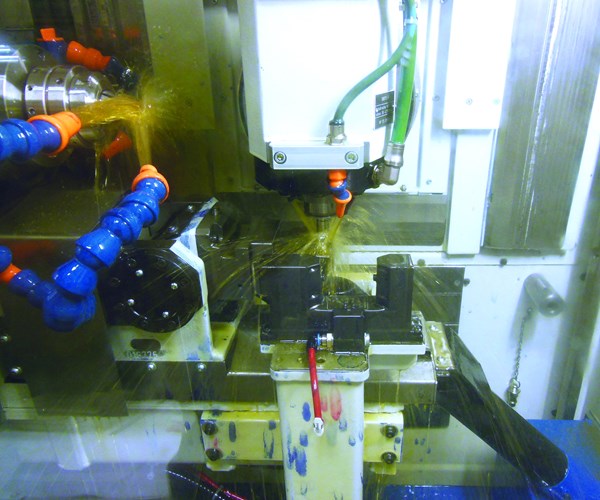Multitasking Takes a Turn
Turn-mill machines are known for their capabilities in single-setup part production. Here are two very different examples of shops that are using multitasking to their advantage in medical machining.

Turn-mill machines are capable of both rotating-workpiece operations (turning) and rotating-tool operations such as milling and cross-drilling. Typically, the machine is recognizable as a horizontal or vertical lathe, with spindles for milling and drilling available at some or all of the tool positions.
Willemin-Macodel, Inc. offers a line of multitasking machines designed as five-axis bar-fed milling machines, but they include 6,000-rpm turning capabilities on the A axis and tool magazines ranging in capacity from 24 to 72 to accommodate both milling spindles and turning toolholders (a certain number of which can lock the tool, oriented at a specific angle to cut as the spindle turns like a lathe).
In “Applying Multitasking’s Versatility,” we visit a shop that has a few of these machines (408MT models) in place to handle parts that are more milling heavy yet require as much as 20 percent of the part to be turned. The machines allow the company to drop its complex medical parts complete in a single setup.
In our latest issue, we visit a shop specializing in 3D printed parts but also taking advantage of the Willemin design. “First-Class Manufacturing with Additive” discusses how the shop is using the 508MT model to finish its 3D printed medical components such as acetabular cups for hip replacement as well as other implant parts.
RELATED CONTENT
-
When To Combine Milling And Turning
Turn/Mill technology enables users to complete a workpiece in a single handling. This article looks at some of the criteria that make application of this multi-tasking productive.
-
Custom Tooling, Workholding Help Whip Rotors Into Shape
Whipple Superchargers uses unique form tools and dead-length-collet workholding for its B-axis turn-mill enabling it to create more accurate rotors for its brand of engine power-adders.
-
Making Waves with Lathe Automation
After years of relying on an extensive machining cell for part production, this marine equipment manufacturer has now reduced part handling and improved quality through use of single-setup lathes and automated loading and unloading.



